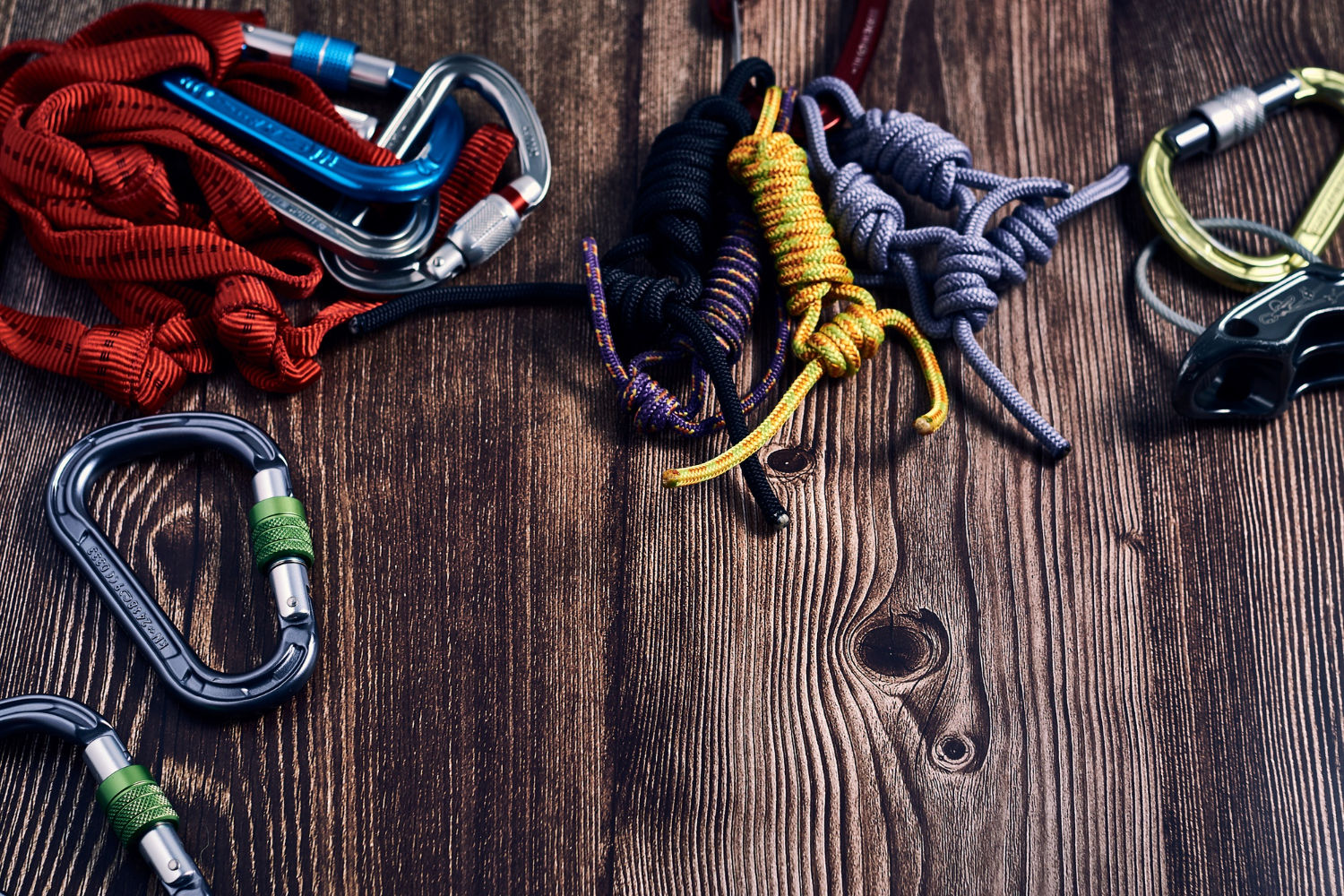Climbing is not just a test of physical strength and mental endurance. This activity requires a strong emphasis on safety. Your climbing gear serves as your safeguard on the vertical playground.
This comprehensive guide delves into the critical aspects of maintaining and choosing climbing gear to ensure you can entirely focus on conquering your next climb.
Climbing ropes
Understanding the anatomy of a climbing rope can help you make a better selection. The core strengthens the rope, while the sheath is there for protection and better grip. Some ropes come with a middle mark. It helps to rappel or find the midpoint for other climbing tasks.
Various types of climbing — gym, sport, trad, or alpine — require different kinds of ropes. Consider factors such as rope length, diameter, and whether the rope is dry-treated for water resistance. If you are new to climbing, an excellent all-around diameter is around 9.5 to 10mm.
Maintaining your rope is vital for its longevity and safety. We suggest using rope-specific soap to clean your rope after climbing in dusty or muddy conditions. Make it a habit to flake it after each use to check for inconsistencies, kinks, or frayed spots.
Harnesses
You can categorize harnesses into the following:
- Sit harnesses are commonly suitable for sport climbing.
- Full-body harnesses are great for rescue operations and children.
- Chest harnesses, usually used with sit harnesses, provide added stability.
Beyond visual checks, feel the harness material between your fingers. If the belay loop or tie-in points feel softer or more compressed, it is time for a replacement. Always follow the manufacturer’s instructions for washing and storing your harness.
Features such as adjustable leg loops, multiple gear loops, and padding can make your climbing experience more comfortable and efficient. Try on several models and hang in them. Remember, a more expensive harness is not always better — it must suit your specific climbing needs.
Carabiners and quickdraws
Carabiners come in different materials, like aluminium or steel. Some have specific coatings to resist corrosion. Each material has pros and cons regarding weight, durability, and suitability for particular environments.
Consider what you will primarily use the carabiners for — quickdraws for sport climbing, locking carabiners for belaying, or oval carabiners for racking gear. The shape can also affect how easy it is to use the carabiner for its intended purpose.
Apart from visual inspections, test the locking mechanism to ensure it engages and disengages smoothly. A sticky or inconsistent gate could indicate wear or internal damage.
Helmets
Hardshell helmets offer better durability, while foam helmets are lighter and offer better ventilation. Knowing your preferences and needs can influence your choice.
Ensure the helmet you choose meets the safety standards for climbing. It should sit comfortably on your head without being too tight or loose and offer an adjustable chin strap for a secure fit.
Store your helmet in a cool, dry place away from direct sunlight. Extreme temperatures can compromise the material, so avoid storing it in a car trunk during hot summer days.
Conclusion
Climbing gear is the lifeline that every climber trusts implicitly. With regular maintenance and the right choices, your gear will serve you well. After all, a well-prepared climber is a safe and successful one. So invest time in understanding, choosing, and caring for your equipment. Your life literally hangs on it!
Do you have any questions? Our team is always here to assist you. Do not hesitate to ask for specific gear recommendations, maintenance tips, or general climbing advice.
